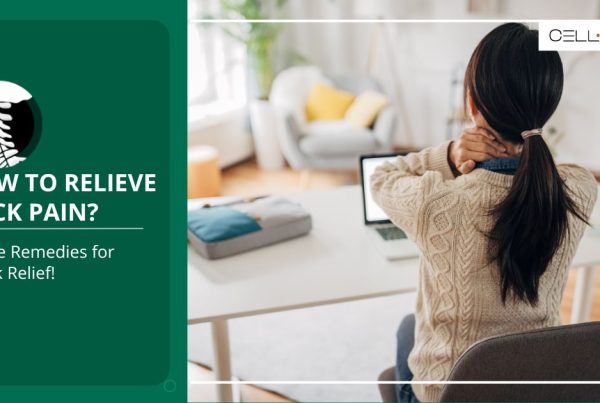Published on: November 25, 2022 | Updated on: August 29, 2024
Any injury to the spine can significantly impact the rest of the body parts. Spinal injuries primarily affect the neck, causing chronic neck pain and even paralysis in the worst cases. The exact impact of the injury depends on various factors, such as which area of the spine is injured.
The part of the spine in the neck region is called the cervical spine. It is composed of 7 vertebrae, from C1 to C7. The C7 is located at the bottom of the neck, followed by C5 and C6 in the lower neck. These regions support the neck and offer flexibility to the head. Any injury in this area can make it hard even to perform simple tasks.
While no one wants cervical spine surgery, it sometimes becomes essential. Your doctor will try different natural treatment methods on you first. But if they come out ineffective, surgery will be necessary. The recovery time will vary depending on the condition of your cervical spine.
When Do You Need Neck Surgery?

Your doctor will evaluate different factors to determine if you need neck surgery. They will first evaluate your symptoms and then perform a diagnosis of the type of neck injury you have. If it’s intense and challenging to treat with conservative treatments, they will suggest you go for surgery.
Some common neck conditions that require surgery are:
- Cervical Radiculopathy. It refers to a herniated disc that results in the compression of the nerve root. Continuous compressions lead to bone spurs that cause extreme nerve irritation.
- Spinal Stenosis. It is when the spinal canal narrows, resulting in spinal cord compression. Spinal stenosis also puts a lot of pressure on the spinal nerves, causing pain and numbness.
- Degenerative Disc Diseases. Any injury to the spinal cord can push the discs against one another, making them grind against one another and become fragile. It also entraps the spinal nerves. The continuous grating of the vertebrae causes excruciating pain.
There could be other C5-C6-C7 neck conditions that may require surgery as treatment.
Treating the C5-C6-C7 Neck Injury
Most neck injuries can be treated with conservative or non-surgical methods. But surgery becomes crucial if the symptoms don’t improve with time or worsen. Many people also opt for another option, orthobiologic treatments, which are less invasive and painful and have a very short recovery time.
Surgical Methods
The purpose of neck surgery C5-C6-C7 is to relieve nerve irritation, improve neck stability, and prevent future injuries. Surgery is recommended for individuals with recurring neck pain and muscular issues that restrict their normal functioning.
Common surgical methods include:
- Anterior Cervical Discectomy and Fusion (ACDF). In this process, the C5-C6 intervertebral disc is replaced with an implant or bone graft to relieve pressure on the C6 area of the spinal cord. This allows both C5 and C6 vertebrae to fuse.
- Cervical Artificial Disc Replacement (ADR). The surgery replaces the damaged disc with an artificial one. As a result, the irritant is removed, and the motion is maintained in that area.
- Posterior Cervical Decompression. In this surgery, a small damaged part of the herniated disc is removed from the cervical spine’s back to relieve the nerve compression in the surrounding areas.
- Laminectomy. This procedure removes a part of the vertebral arch from the posterior region to widen the spinal canal. This relieves pressure on the spinal cord, including C5, C6, and C7.
- Foraminotomy. This surgery relieves pressure on the spinal nerves by removing additional or overgrown bones from the intervertebral foramen.
- Laminoforaminotomy. It is a surgery that combines laminectomy and foraminotomy, meaning both are performed simultaneously. This relieves C6 nerve root compression.
Your doctor will choose the type of surgery depending on the injury’s location, extent, cause, and intensity. The healthcare provider may even perform multiple surgeries at once.
Non-Surgical Methods
The common non-surgical methods for neck injuries include:
- Medications. Your doctor will prescribe various medications for C5-C6-C7 injuries, including over-the-counter and non-steroidal anti-inflammatory drugs (NSAIDs). If the pain persists, the doctor may also recommend opioids, corticosteroids, and vitamin D and calcium supplements to promote recovery.
- Neck Braces. A neck brace immobilizes and protects the neck in cases of acute injuries. It helps the bones, ligaments, and blood vessels heal more quickly.
- Chiropractic Methods. Chiropractic adjustments improve neck function, reduce pain, and enhance the range of motion in the C5-C6-C7 areas. It also ensures a proper head and neck balance.
- Injections. In case of pain caused due to herniated discs or whiplash, the doctor may suggest steroid injections for the facet joints to relieve pain. These injections provide 11 months of pain relief during the recovery period.
Orthobiologic Methods
The two most commonly performed orthobiologic treatments for C5-C6-C7 neck surgery are cell-based and platelet-rich plasma (PRP) therapy. Both are outpatient procedures, meaning you can go home after the process is completed.
At CELLAXYS, we perform both orthobiologic treatments, depending on your condition.
- Cell-based Therapies. In this process, the doctor extracts healthy cells from the patient’s adipose (fat) tissue (called Minimally Manipulated Adipose Tissue Transplant or MMAT) or bone marrow (called Bone Marrow Concentrate or BMAC). Then, these cells are processed and reinjected into the injury site for a speedy recovery. Both processes take about 1.5 to 2 hours to complete.
- PRP Therapy. PRP involves taking the patient’s blood sample, isolating platelets, and reinjecting them into the injury site. Platelets are the healing components of our body that release 10 Growth Factors for tissue development, attract healing cells from the blood, and produce fibrin (a web-like scaffolding) to promote healing in the neck region. A high number of platelets in the injury site shortens the C5-C6-C7 recovery time. The process is completed within 45 minutes.
Neck Surgery C5-C6-C7 Recovery Time
Whether you opt for surgery or orthobiologic treatments, you will feel immediate relief from neck injury symptoms, such as nerve irritation, weakness, numbness, and pain. However, you should practice self-care and physical therapy to strengthen your neck muscles and speed up recovery time.
The recovery time for C5-C6-C7 neck treatments is about 4 to 6 weeks. Full recovery may take months. You can shorten your recovery by maintaining a proper lifestyle and cooperating with your doctor. Even after your recovery process is completed, you should continue physical therapy and chiropractic care to prevent injuries in the future.
Sources
Footnotes
- Ellenberg MR, Honet JC, Treanor WJ. Cervical radiculopathy. Archives of physical medicine and rehabilitation. 1994;75(3):342-52.
- Melancia JL, Francisco AF, Antunes JL. Spinal stenosis. Handbook of clinical neurology. 2014;119:541-9.
- Guiot BH, Fessler RG. Molecular biology of degenerative disc disease. Neurosurgery. 2000;47(5):1034-40.
- Furukawa Y, Miyaji Y, Kadoya A, Kamiya H, Chiba T, Hokkoku KI, Hatanaka Y, Imafuku I, Miyoshi K, Sonoo M. Determining C5, C6 and C7 myotomes through comparative analyses of clinical, MRI and EMG findings in cervical radiculopathy. Clinical Neurophysiology Practice. 2021;6:88-92.
References
- C5-C6 Treatment. Spine-Health. Accessed 9/7/2023.
- Slipped (Herniated) Disc. Healthline. Accessed 9/7/2023.
- Neck Pain. Mayo Clinic. Accessed 9/7/2023.
CELLAXYS does not offer Stem Cell Therapy as a cure for any medical condition. No statements or treatments presented by Cellaxys have been evaluated or approved by the Food and Drug Administration (FDA). This site contains no medical advice. All statements and opinions are provided for educational and informational purposes only.
Dr Pouya Mohajer
Author
Pouya Mohajer, M.D. is the Director of Spine and Interventional Medicine for CELLAXYS: Age, Regenerative, and Interventional Medicine Centers. He has over 20 years of experience in pain management, perioperative medicine, and anesthesiology. Dr. Mohajer founded and is the Medical Director of Southern Nevada Pain Specialists and PRIMMED Clinics. He has dedicated his career to surgical innovation and scientific advancement. More about the doctor on this page.
Dr Pejman Bady
Contributor
Dr. Pejman Bady began his career over 20 years ago in Family/Emergency Medicine, working in fast-paced emergency departments in Nevada and Kansas. He has served the people of Las Vegas as a physician for over two decades. Throughout this time, he has been met with much acclaim and is now the head of Emergency Medical Services in Nye County, Nevada. More about the doctor on this page.









